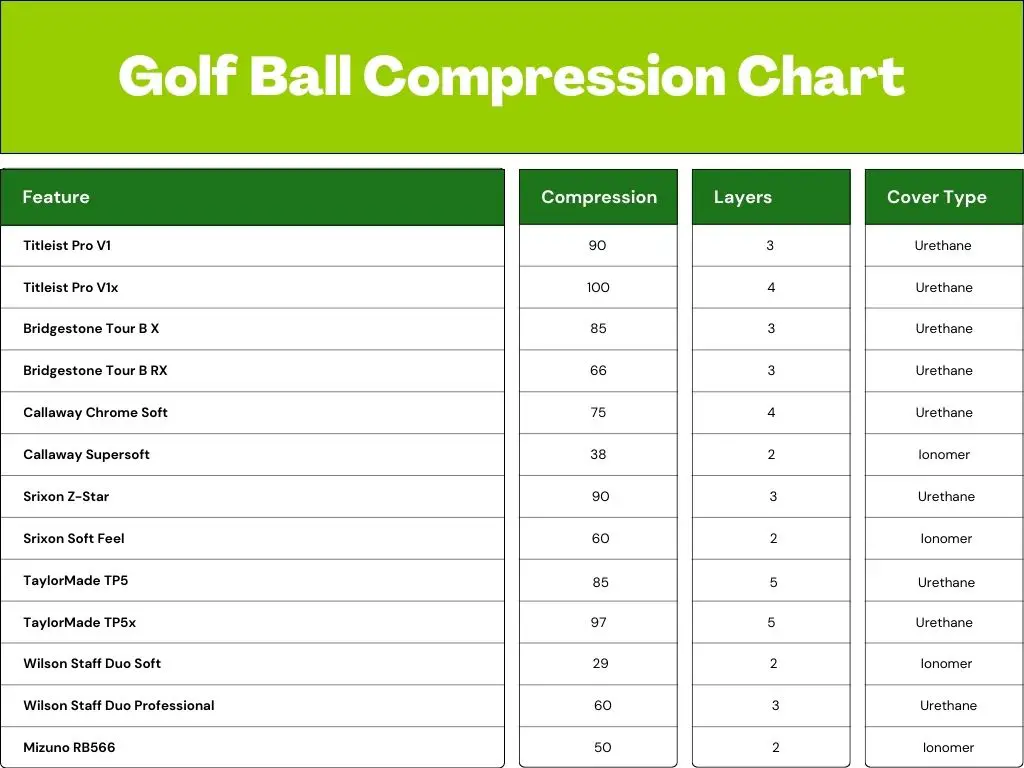The Golf Ball Compression Chart: What Every Golfer Must Know
- Last updated on December 22, 2023
- Toni Benedito
- Golf Equipment & Gear, Blog
Choosing the right golf ball is key to improving your game. Compression, measured from 0 to 200, determines how much a ball compresses upon impact, influencing its trajectory and distance. Refer to a golf ball compression chart to match your swing speed and playing style, ensuring you pick the perfect ball for optimal on-course performance.
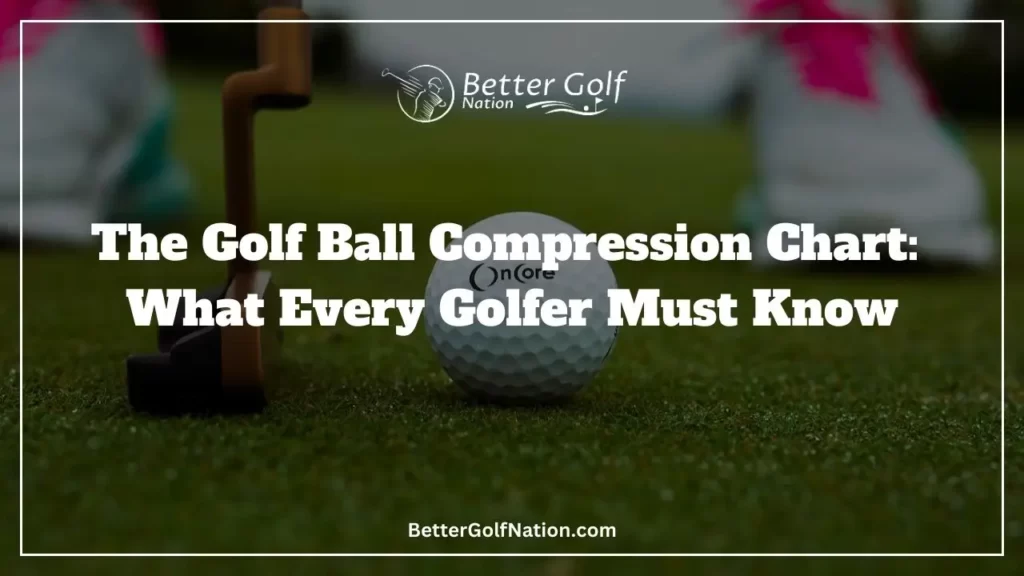
Key Takeaways
- Golf ball compression, ranging from 0 to 200, impacts trajectory and distance. A low compression means a softer ball, easier to compress, while a higher compression indicates a harder ball.
- Compression charts visually represent different balls’ compression levels, aiding in selecting based on swing speed and playing style.
- Understanding compression is crucial for optimal performance, as it influences flight trajectory, distance coverage, accuracy, and overall play.
- Players can assess their swing speed and refer to a reliable compression chart for informed ball selection, ensuring ideal performance on the course.
- Testing compression using launch monitors or simulators helps determine the ideal compression level, ensuring players choose the right ball for their playing style and swing speed.
Introduction
Golf, a dynamic fusion of skill, precision, and sheer determination, demands the right equipment to elevate your game. Amidst the myriad of choices, one often-overlooked yet pivotal element is the golf ball. As a golf enthusiast, you’re likely familiar with the overwhelming array of options lining the shelves of your local pro shop, each promising to enhance your performance on the course.
Navigating this sea of choices can be a challenge, but fear not, for within the realms of golf ball selection lies a game-changing factor: compression.
In the pursuit of mastering the art of golf, understanding the nuances of golf ball compression is akin to unlocking a secret code that can significantly influence your game. Compression, graded on a scale from 0 to 200, delves into the very essence of how a golf ball reacts to the forces it encounters on the course.
Whether you wield a putter, iron, or driver, the compression of the golf ball under the impact of your swing dictates its trajectory, distance coverage, accuracy, and overall performance. It’s not merely a technicality; it’s a fundamental aspect that can either enhance or impede your prowess on the greens and fairways.
Enjoying this article? Read more:
Check out this video below from Club Champion‘s YouTube channel talking about ball compression and whether it matters or not:
As we embark on this journey into the intricacies of golf ball compression, we’ll unravel the layers of information that shape this crucial element of your golfing arsenal.
From the fundamental definition of compression to the practical application of golf ball compression charts, our exploration will equip you with the knowledge needed to make informed decisions about the golf balls you choose to accompany you on your golfing endeavors.
In the world of golf, where precision is paramount and the right choice can make all the difference, understanding golf ball compression emerges as a key to unlocking your full potential on the course.
So, let’s delve into the depths of this critical aspect, exploring how compression charts, swing speed, and tailored testing can guide you towards selecting the golf ball that aligns seamlessly with your playing style, ensuring each shot is a step closer to golfing excellence.

Understanding Golf Ball Compression
Golf ball compression is a term that refers to the hardness of a golf ball.
Simply put, it is the amount of pressure that a golf ball exerts on itself when it is hit by a club. The higher the compression, the harder and less elastic the ball will be.
There are different levels of compression available in golf balls, ranging from around 70 to 110. Golfers choose their golf balls based on their swing speed and playing style.
Players with slower swing speeds tend to benefit more from low-compression balls because they compress more easily upon impact with the clubface and produce more distance off the tee. On the other hand, high-compression balls are better suited for players with faster swing speeds because they require more force to compress, resulting in less deformation at impact and producing more spin.
"Understanding golf ball compression is critical for optimizing play. The higher the compression, the less elastic the ball, suitable for faster swing speeds. Not all expensive balls have high compression; low-compression options offer excellent performance and feel. Compression charts provide valuable insights for personalized ball selection."
It’s important to note that not all high-end or expensive balls have high compression ratings. Some manufacturers produce low-compression premium balls that offer excellent performance and feel around the greens while maintaining distance off the tee.
Similarly, some budget-friendly alternatives can also provide superior performance relative to their price point. Compression chart data analysis can provide valuable insights into which type of ball you should pick for your game based on your driving yardage, swing speed rank, spin rate, and efficiency in different aspects of your game, such as putting or chipping.
Overall, understanding golf ball compression is critical for optimizing your play on the circuit or when just having fun playing golf with friends. The next section will cover why you should pay attention to this aspect of your equipment selection process.
Enjoying this article? Read more:
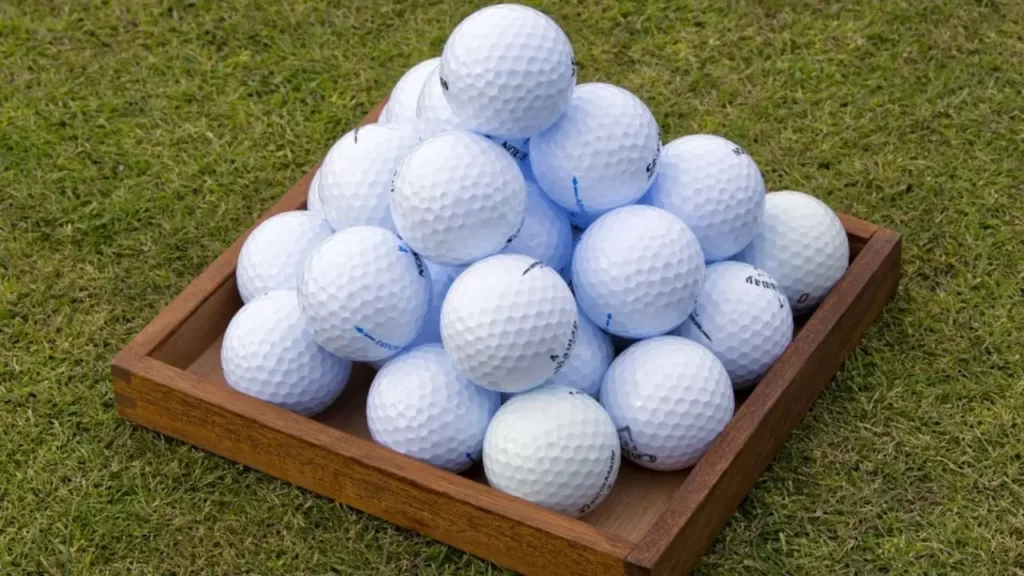
The Importance of Golf Ball Compression
Golf ball compression is a key factor in determining the effectiveness of your golf shots. Compression refers to how much the ball will compress when it is struck.
The more the ball compresses, the less energy it loses upon impact, resulting in greater distance and better performance. Thus, choosing the right compression rating can significantly affect your yardage and control.
It is important to note that golfers with different swing speeds will require different compression ratings to maximize their game. For instance, if you have a slower swing speed, you may benefit from using a low-compression golf ball, as it will help you achieve better length on your shots.
On the other hand, if you have a higher clubhead speed, using balls with higher compression ratings can help provide more control over your shots. This cannot be overstated when comparing high-end and top-quality balls with lesser-known brands or generic balls found at discount stores.
"Choosing the right compression rating is vital for golfers. More compression means less energy loss, resulting in greater distance and control. Tailoring compression to your swing speed is key—low-compression for slower swings, high for faster ones. It's a game-changer, especially when comparing top-quality balls and different club styles."
Top-of-the-line balls come with detailed information guides that include circuit analysis charts detailing all aspects of their performance; these charts are particularly useful when selecting a new type of ball to try out since they offer numerous data points by which to compare options. Compression also plays an important role when comparing drivers and clubs used for iron play.
Different clubs require different types of balls for optimal performance and distance control. Generally speaking, players who use older-style irons may prefer low-compression balls since they provide more spin-off for each iron shot for greater accuracy.
Additionally, players who use newer models of drivers may need higher compression ratings given their larger clubheads; this enables them to compress the ball more easily for better yardage results.
Understanding golf ball compression can significantly improve a player’s overall yardage and control on each shot taken within range during every round played on any course around the world, making this aspect critical whether playing casually or competitively at any level!
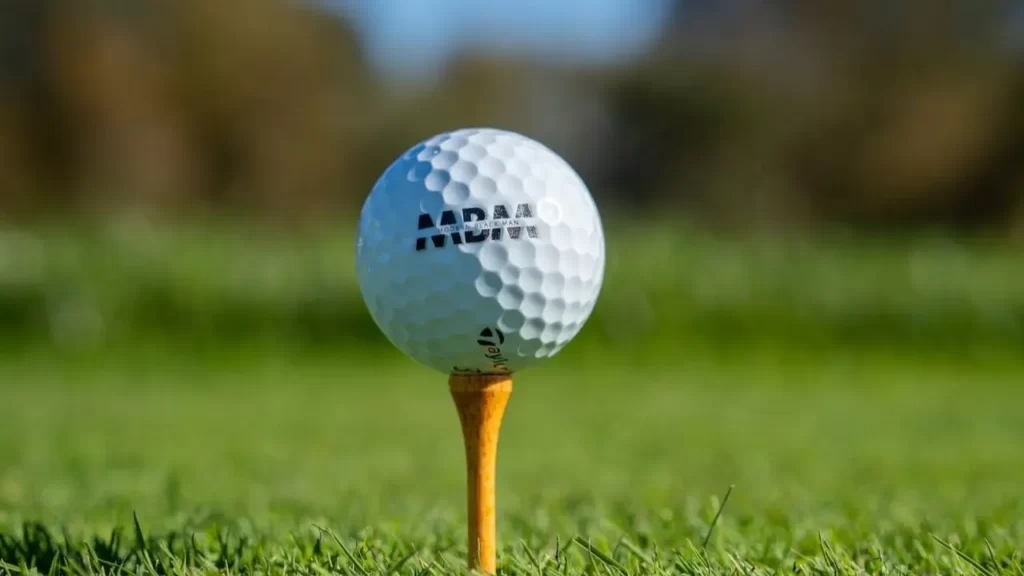
Golf Ball Compression Chart Explained
To understand the golf ball compression chart, it is important to know what compression means. Compression refers to the degree of density at which the ball is made.
The higher the compression, the harder and denser the ball will be. Golf balls have varying degrees of compression, ranging from 0 (soft) to 200 (hard).
The ideal compression for each golf player depends on their swing speed, playing style, and skill level. The golf ball compression table is designed to help golfers select the right type of ball that suits their game.
It provides valuable information on how different levels of compression affect performance on the course. The chart typically ranks balls by compressing them with a machine that measures how much they deform under pressure.
The graph shows how far a compressed ball travels when hit by a driver. The length of the yardage varies depending on where it lands and how steeply it bounces back up into the air after impact. Below are some examples from our compression chart:
Players who have slower swing speeds usually choose lower-compression balls because they compress more easily upon impact and generate greater distance with less force. A top-quality golf ball will typically feature multiple layers, each with different levels of firmness or softness.
These layers work together to optimize spin and provide maximum distance while reducing unwanted sidespin or spin axis tilt. Upon analysis, this layering can be seen in detail in a table format alongside other details such as manufacturer name and price range.
Choosing a golf ball can be an overwhelming task for any golfer due to the countless options available for selection. Using a golf ball compression chart as your guide can save you time and money by helping you select optimal options based on your game’s needs without breaking your circuit or wallet!
Enjoying this article? Read more:
Check out this video below from Wilson Golf‘s YouTube channel talking about golf ball compression and distance:
Choosing the Right Golf Ball Compression for Your Game
Embarking on the journey to select the ideal golf ball compression is a nuanced process where considerations unfold like the layers of a well-struck drive. At the heart of this decision-making endeavor is the pivotal factor of swing speed. Whether your swing is a deliberate dance or a lightning-quick flourish, understanding how the ball reacts to your clubhead’s impact becomes paramount.
Here are some factors to consider:
Swing Speed: Your swing speed acts as the compass in the labyrinth of compression options. For those who orchestrate a more deliberate swing, a lower-compression ball proves advantageous. The ease with which it compresses upon impact translates to enhanced distance and control. Conversely, those wielding a faster, more dynamic swing find solace in the arms of higher-compression counterparts, which demand a forceful impact, resulting in controlled shots and increased spin.
Type of Golf: The stage upon which your golf narrative unfolds plays a significant role in the compression saga. High-end circuits, with their demands for precision and performance, beckon the use of superior golf balls adorned with multiple layers and a higher compression rating. These balls are crafted not just for distance but also for spin control, offering a symphony of capabilities crucial in competitive play. On the flip side, if you’re still honing your swing in recreational settings, a mid-range or lower compression ball may prove more forgiving and budget-friendly.
Personal Preferences: As golf is as much a game of feel as it is of numbers, your personal preferences become the brushstrokes that add the final touches to your compression masterpiece. Some players find comfort in the softer caress of a lower-compression ball, while others seek the resolute response of a firmer touch. This preference, guided by the sensations you seek on each swing, becomes a hallmark of your unique playing style.
Choosing the right golf ball compression transcends the realm of mere technicality; it’s the fine-tuning that can elevate your on-course performance. Armed with a comprehensive golf ball compression chart and a keen awareness of your swing speed and personal inclinations, you wield the power to sculpt your golfing experience. The right ball becomes not just a tool but a companion, guiding each shot towards precision and mastery on the lush greens and fairways of your golfing journey.
Enjoying this article? Read more:

Testing Golf Ball Compression
When it comes to testing golf ball compression, there are several methods available. One of the most common is the “squeeze test,” where you use your hands to compress the ball and measure how much it compresses.
This method can give you a rough estimate of the ball’s compression, but it is not very accurate or consistent. For a more precise measurement, you can use a dedicated compression testing device.
These devices typically consist of a platform that supports the golf ball and a hydraulic press that applies pressure to the ball until it compresses to a predetermined level. The machine then measures the amount of force required to achieve this level of compression and displays it on a digital readout.
If you want to go even further in your testing, you can use high-speed cameras and sensors to measure how much a golf ball deforms upon impact with a clubface. This type of analysis can provide valuable insights into how different types of balls perform under different conditions.
It’s important to note that while testing golf ball compression can be useful for understanding how different balls will perform on the course, it should not be the only factor in your ball selection process. Other factors, like spin rate, launch angle, and overall feel, should also be taken into account when deciding which ball will best suit your game.
In addition, keep in mind that even two balls with identical compression ratings may have very different performance characteristics due to differences in design and construction. It’s always best to test out several options on the range or course before making a final decision on which one is right for you.
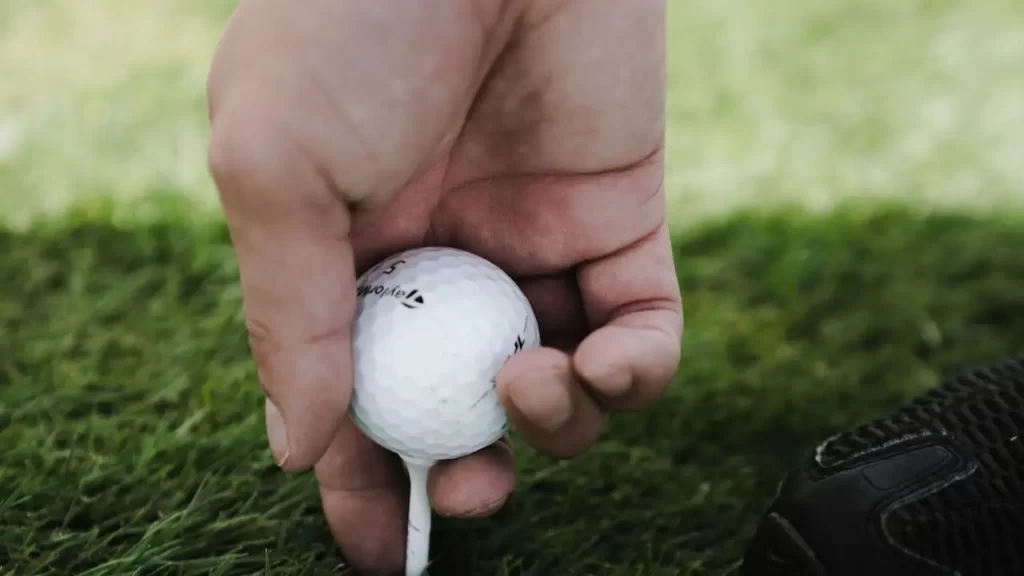
Enjoying this article? Read more:
Check out this video below from THP Golf TV‘s YouTube channel talking about golf ball compression and distance:
Conclusion
Understanding golf ball compression is essential for any golfer who wishes to excel at the sport. The compression chart provides a solid foundation for choosing the right golf ball that suits your swing speed and skill level.
With the right golf ball, you can improve your yardage, spin rate, and accuracy with each shot. Testing various golf balls for their compression rating can help you identify the best-quality ball that works well with your specific clubhead speed, swing style, and preferences.
Depending on whether you are using a driver, iron, or putter, different types of balls may be more suitable for each type of club. A high-end, top-quality ball may compress at higher rates than cheaper ones but provide more efficiency and effectiveness in terms of yardage and spin.
Remember that while there are significant factors to consider when selecting the best golf ball for your game, it’s crucial to focus on how well it works with your swing style rather than solely relying on any chart or analysis. Therefore, testing various balls before settling on one can lead to better results on the course.
Taking time to understand golf ball compression and using a compression chart to select the right one is an excellent way of improving performance when playing golf. This knowledge, along with some practice time at the driving range or course, will make all players better informed about their game and how they can maximize their abilities while enjoying themselves at the same time.
Share this Post
Toni Benedito
Keep Reading
Follow Us
Recent Posts

How Do Pro Golfers Get Paid? The Business of Golf
Professional golfers get paid both before and after tournaments. Before a tournament, they receive appearance fees, sometimes exceeding $1 million, to attract top players. After the tournament, earnings depend on their placement, with the PGA

How Much Do Golf Players And Pros Make? You Won’t Believe It!
Professional golfers earn substantial incomes through tournament winnings, sponsorship deals, and endorsements. Top players on the PGA Tour can make millions annually, with significant earnings from prize money and lucrative brand partnerships. For example, Rory

The Shocking Cost: How Much Does It Cost to Fly with Golf Clubs?
Flying with golf clubs can be a hassle, but it’s worth it for avid golfers. Costs vary by airline, ranging from $30 to $150 per way. Southwest Airlines offers a generous policy, allowing one set

Why Do Golfers Tape Their Fingers Before Hitting the Course?
Golfers tape their fingers to prevent injuries from repetitive motions, provide support for existing injuries, and improve grip comfort. It’s a popular technique among amateurs and pros alike, offering a lightweight and effective solution compared

How Much Does a Round of Golf Cost? Are You on Par?
The cost of a round of golf varies widely based on factors like course type, location, and time of play. Public courses typically range from $30-$100 per round, while exclusive ones like Augusta National or

Hidden Fees: How Much Does It Cost To Rent a Golf Cart
Wondering how much it costs to rent a golf cart? Explore factors like location, rental duration, and cart type impacting prices. Daily rates range from $50 to $80, while weekly rentals can vary from $200
Table of Contents


